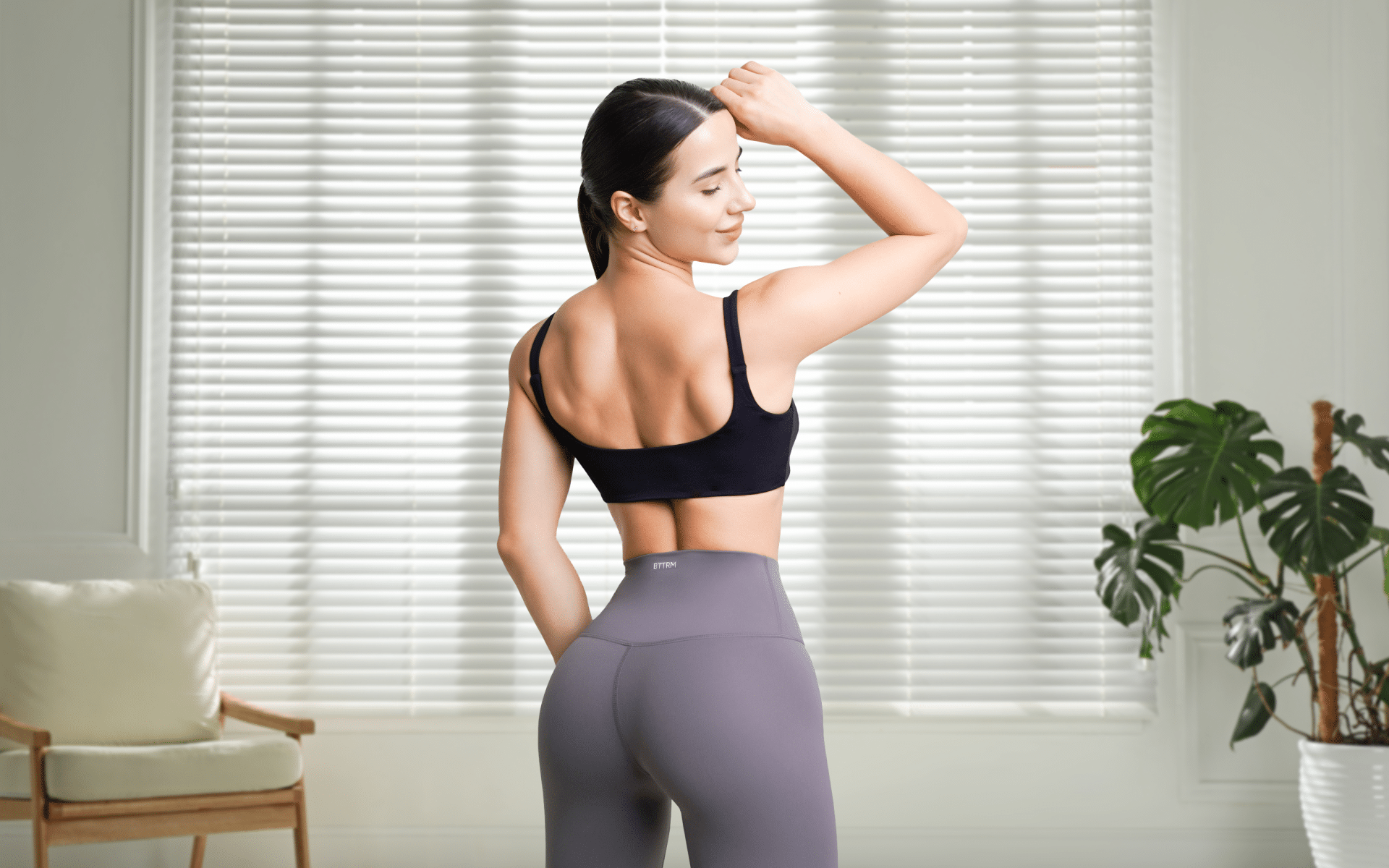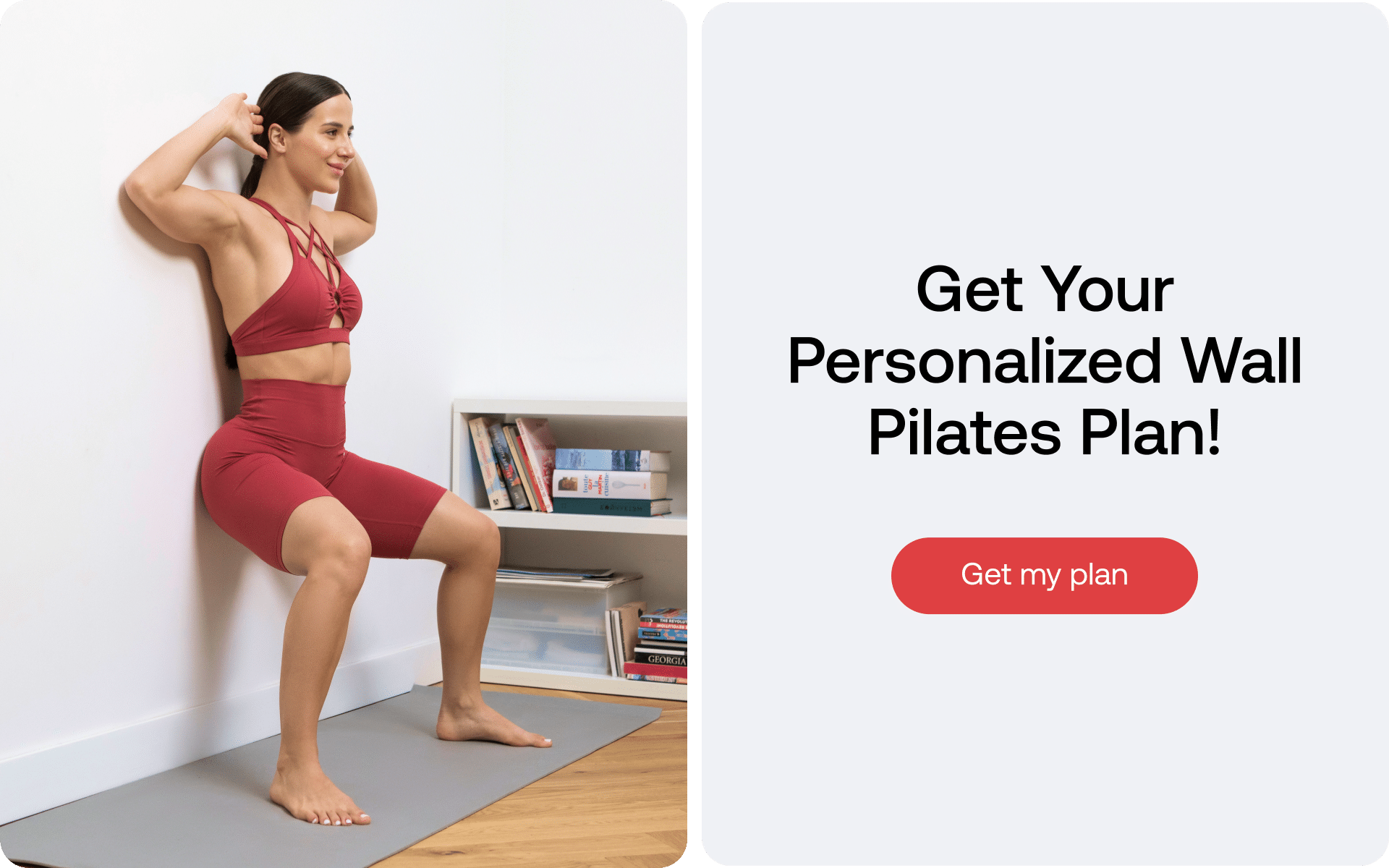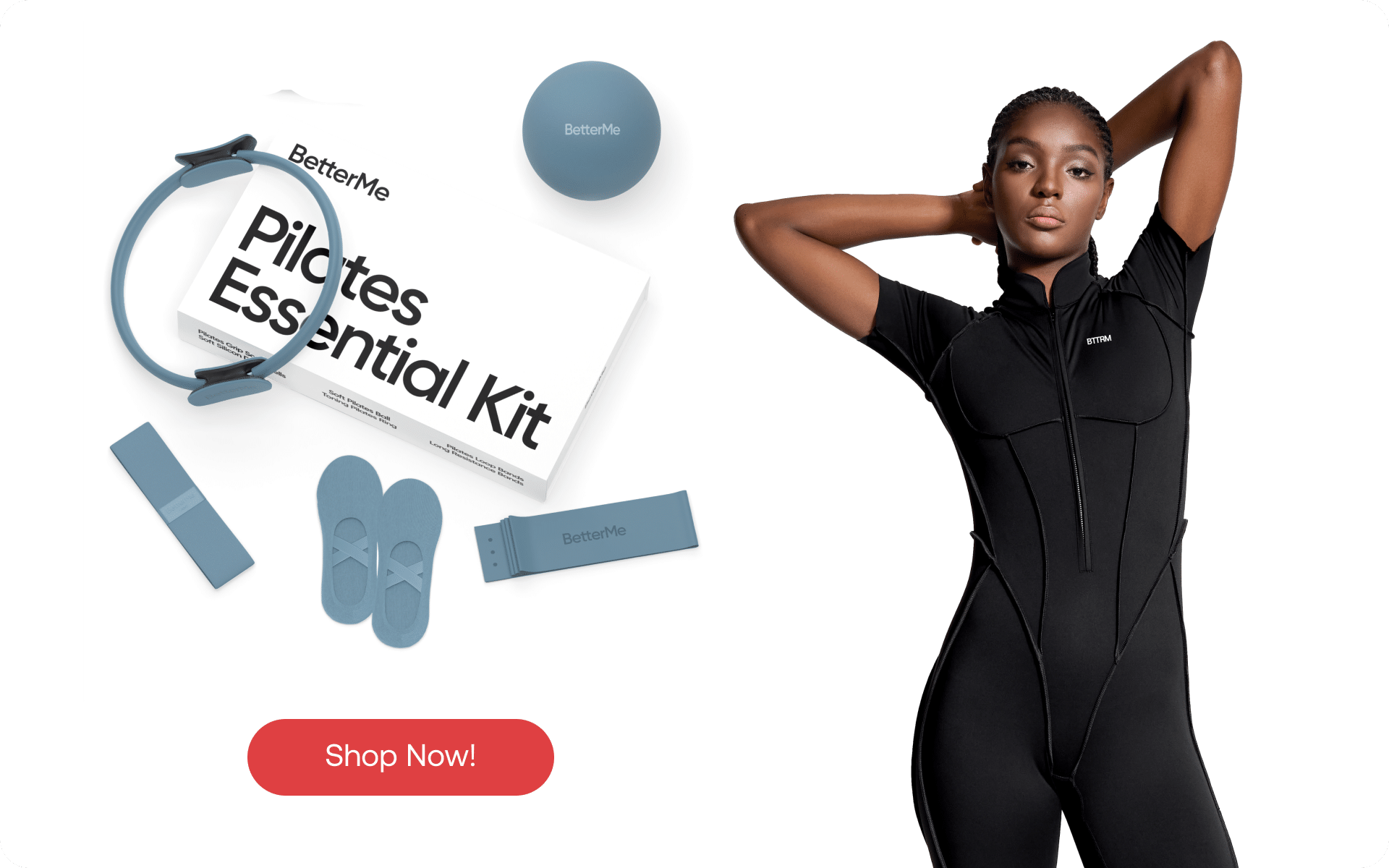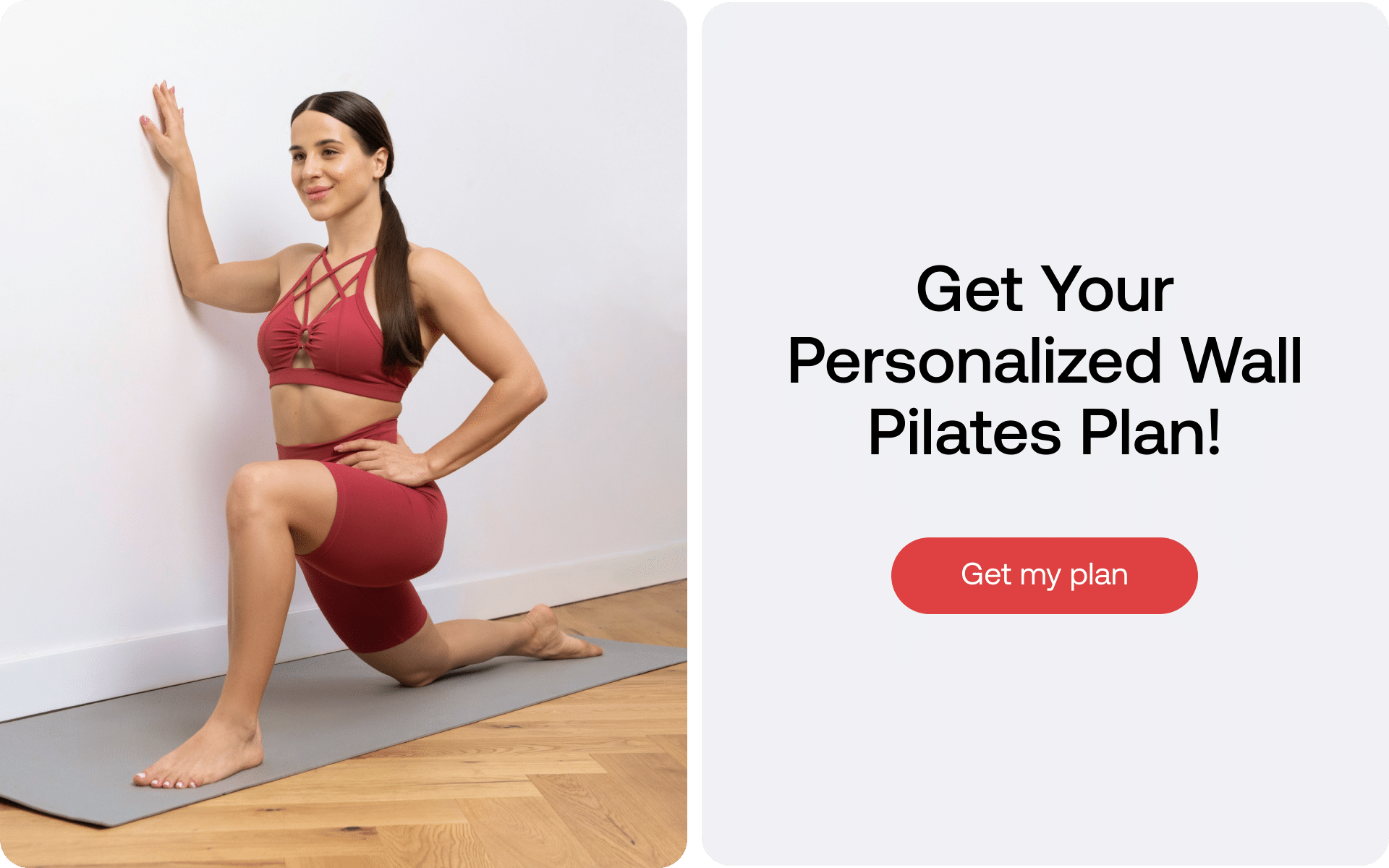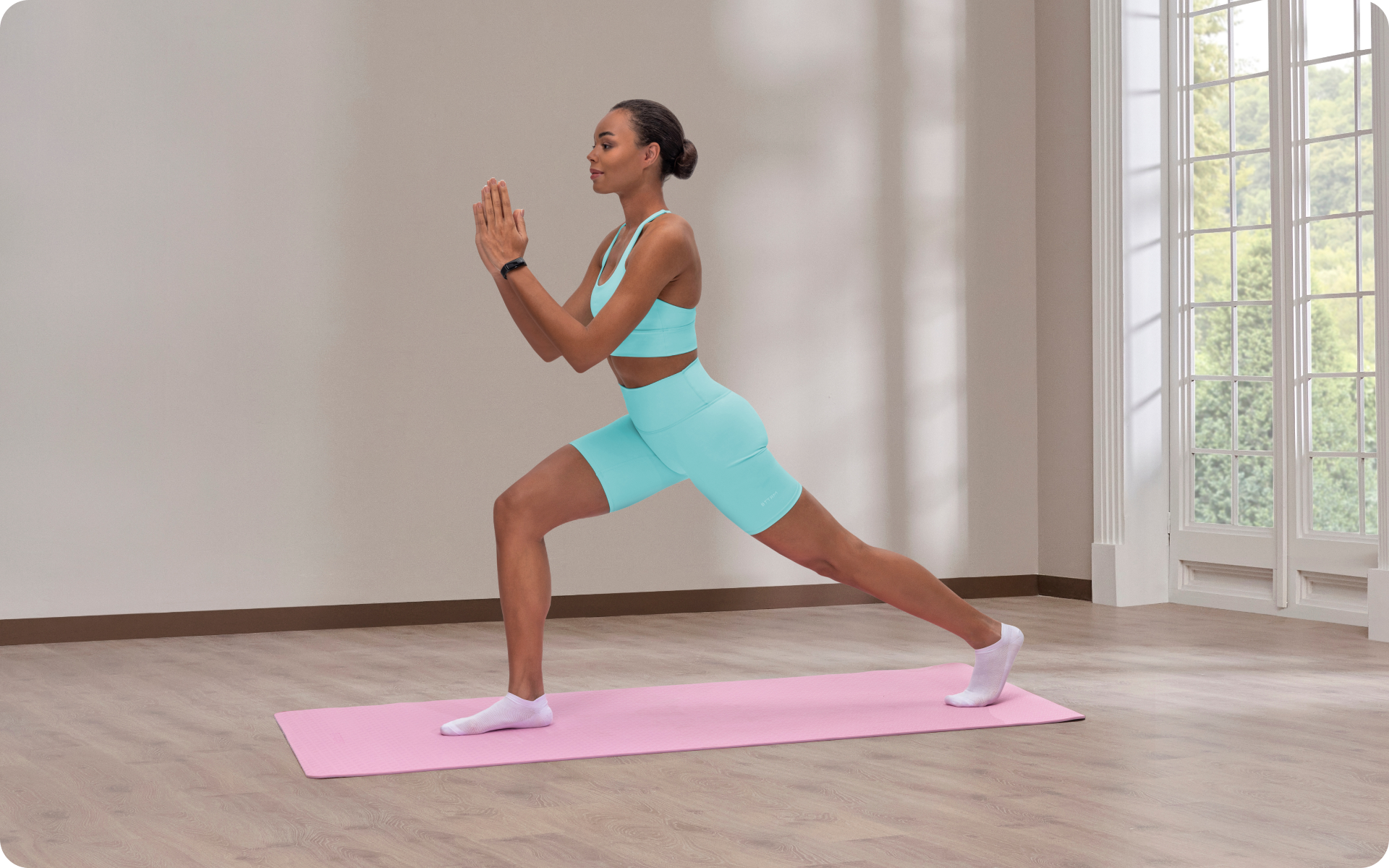If you’re anything like me, you very likely find yourself stretching and contorting your back into random positions throughout the day to get rid of an ache and feel more comfortable. The issue of back pain is very real among many office workers and students who spend a large chunk of their days hunched over a desk or computer. One way to get rid of this ache and relieve the tension is by doing a standing wall angel exercise. This simple workout is not only super effective at giving you a good stretch and getting your spine back in alignment, but it’s also a great mobility exercise that can help increase your range of motion and relieve pain. Read on to know more about the wall angel exercise, its benefits, proper techniques on how to do it, the muscles affected by wall angel exercise and much more!
What Is The Wall Angel Exercise?
Also known as the ‘V to W’ stretch, this is an upper body mobility exercise that is said to help relieve back pain, increase mobility, and improve posture. Wall angels can also be used as an effective warm up exercise on upper body weight training days as they help activate the shoulders.
What Are Wall Angels Good For?
Some wall angel exercise benefits include
-
Improved Posture
If you spend most of your day hunched over, either looking at documents/books on your desk, your phone, or your laptop’s keyboard, you probably have bad posture and a bit of a hunchback.
We all know that bad posture leads to both neck and back pain (4), but according to Harvard Health Publishing, slouching also increases the risk of constipation, urinary incontinence – involuntary urination especially after sneezing, coughing or laughing -, heartburn and slowed digestion as it puts unnecessary pressure on the abdomen, which forces your stomach acid to go in the wrong direction (1).
Read More: Wall Sit Muscles Worked: A Comprehensive Guide To Lower Body Strength
-
Better Management Of Back Pain
Improved posture definitely helps in the management of back pain, but did you know that doing shoulder and upper body exercises can also help with this?
In a study published in 2017 in the Journal of Sports Science and Medicine, researchers found that a combination of conventional low back exercises as well as static stretching and isotonic exercises for the neck, upper-back, and shoulder muscles for 6 weeks lead to a significant improvement in pain levels for patients dealing with chronic back pain (3).
A review of about 202 systematic reviews published in 2020 in the Journal of Orthopaedic & Sports Physical Therapy also showed that performing shoulder exercise helped reduce pain, improve shoulder movement, and increase shoulder function (6).
Seeing that wall angels are an upper body exercise that mostly targets the shoulders, it is relatively safe to say that adding them to your daily routine will very likely help reduce any shoulder or back pain that you may have.

-
Boosts Confidence
Having good posture helps boost your confidence more than you may think – a fact proven by science.
- In a self-evaluation study published in 2009, researchers found that when study participants were asked to write down things about themselves, they often wrote down positive things when seated in a confident posture than when they were in a slouched/doubtful posture. Good posture = positive thoughts and self related attitude (2)
- In another study following 68 women who all conveyed high levels of body dissatisfaction, researchers found that improving posture – as well as looking at yourself with good posture – not only improved positive emotions in these women, but it also reduced negative emotions and improved body image satisfaction (5).
-
Improved Quality Of Life
With better posture, you are able to be more confident and you can avoid issues such as poor balance, constipation, heartburn, headaches, incontinence, and breathing difficulties (1). In general, the wall angels exercise has the ability to help your life be much better than it is now.
Looking for a way to break the vicious cycle of weight loss and tone up all the jiggly parts? Watch the extra pounds fly off and your muscles firm up with the BetterMe app!
What Muscles Do Wall Angels Work?
Wall angels exercise muscles worked include:
- Deltoids and upper traps (aka trapezius) – The wall angel exercise is mostly an upper body exercise thus it basically targets the shoulders the most.
The deltoids are used in the up and down movement while the upper traps work to keep your arms flat against the wall.
- Chest, hamstrings and core muscles – Doing the angel wings on wall exercise will also work and stimulate these muscles, albeit not as much as the deltoids and upper traps.
The up and down motion will touch on the chest, the core/trunk muscles are used in keeping you upright and spine straight, and hamstrings are used to push yourself on the wall, especially if you are doing the exercise while standing.
How To Do Wall Angel Exercise
Now that you better understand what this exercise is, the muscles affected by it and how it can benefit you, here are the steps to do it correctly and safely.
For the standing wall angel exercise:
- Find a wall and stand about 6 inches in front of it. You can also stand at a further distance of about 8 to 12 inches.
- Keep your spine straight, bend your knees a little and then lean back. Ensure that your head, shoulders, mid and lower back, as well as your bum are touching the wall.
- Make any adjustments needed to ensure that all the above parts are comfortable resting on the wall. Move your feet slightly forward or backwards to ensure that your body is as described in step 2 above. You can also tuck your chin a little to ensure that your head too touches the wall
- Once your torso and bum are in position, lift your arms till they are high above your head. Spread them apart to create a ‘V’ shape. Remember that your arms and elbows should be touching the wall as well and fully extended.
- Bend your elbows and slowly lower your arms by sliding them along the wall. Stop once your hands are just above the shoulders. This should create the ‘W’ shape.
- Hold for 5 breaths/seconds before lifting your arms and going back to the ‘V’ position.
- Repeat this process 8 to 10 times for 1 set. Aim to do 3 sets.
Points to note:
- Your head, torso (back) and butt should be against the wall throughout the entire exercise/set.
- While it’s important to fully extend your arms in the lifted position and drop them as low as possible to properly create the ‘V to W’ shape – do not overextend yourself if you are in pain. Once you feel pain stop.
- You should feel a stretch when doing this exercise. If you don’t feel it, stop and examine if you are in the correct position.
- There is no set time or place to do this exercise. Do it as often as possible to loosen tight back muscles. It’s also a great office friendly exercise that will not disturb your co-workers.
- Remember to keep your core tight and breath throughout the exercise.
Read More: Master The Wall Squat Exercise In 6 Easy Steps: A Beginner’s Guide
Other Variations On How To Do Wall Angels
Standing wall angels are not the only way to do this exercise/stretch. Other modifications include
-
Floor Angels
This variation works well for those who are finding it hard to keep a neutral spine position while standing. Neural spine position refers to the position where the entire spine – from the neck to the middle back and lower back – is in one straight line.
Lying down makes it easier to keep the entire spine straight and also prevents the back from arching when doing the stretch. Steps to doing floor angels are the same as with standing wall angels
-
Single Arm Angels
If coordination is an issue for you – I know it is for me – this variation helps you get in tune with your body so you can later attempt the exercise with both hands. If doing this variation while standing, get into the position described in the ‘how to do wall angels’ section above, but instead of lifting both hands, lift just one.
Do one set for 1 arm before switching to the other, or alternate arms throughout the reps for each set. Single arm angels can also be done while lying down and are said to help alleviate pressure off the spine more – so they are great for anyone dealing with a lot of back pain.

-
Pillow Assisted Wall Angels
In this variation, you will place a pillow or towel between the back of your head and the wall. It creates a new variation to the standard wall angel. The pillow prevents your arms from touching the wall. Think of it as creating resistance and a new stretch. Do not try this variation as a beginner.
If you tend to let yourself off the hook, raise the white flag when things get tougher than you expected, send yourself on an unconscious binge-eating trip – BetterMe app is here to help you leave all of these sabotaging habits in the past!
Safety Tips To Consider With Wall Angels
- Start with single wall (or floor) angels – It’s easier to not over arch your back with this variation plus they help gradually mobilize your spine.
- Keep your buttocks and do not arch your back as you lower your arms – This is a common mistake that many people often make. Be intune with your body at all times. If you find it hard not to do these two things, it’s because your muscles are tight. Decrease your range of motion and do not raise your hands so high up or lower them too much.
- Massage yourself afterwards – Wall angels are a deep stretch that pushes your body beyond the normal range of motion and you will very likely feel sore afterwards. To prevent the soreness going on for days, give yourself or find someone to massage you afterwards. Invest in a foam roller as it helps you easily massage your shoulders, upper and lower back afterwards.
How Many Wall Angels Should I Do?
You should attempt to at least do 1 set of 8 to 10 wall angels a day. You can increase the number of sets or reps if you feel up to it. However, if your muscles are too tight, a set of 3 to 5 wall angels is enough. Build your tolerance, flexibility and mobility overtime rather than pushing yourself too hard as this will lead to injury.
The Bottom Line
The wall angels exercise is a stretch that anyone, regardless of age should try to incorporate in the daily routine. While we may not have any choice on how many hours we spend hunched over, we can certainly take steps to avoid future back pain and problems. Walla angels are the perfect first step.
DISCLAIMER:
This article is intended for general informational purposes only and does not serve to address individual circumstances. It is not a substitute for professional advice or help and should not be relied on for making any kind of decision-making. Any action taken as a direct or indirect result of the information in this article is entirely at your own risk and is your sole responsibility.
BetterMe, its content staff, and its medical advisors accept no responsibility for inaccuracies, errors, misstatements, inconsistencies, or omissions and specifically disclaim any liability, loss or risk, personal, professional or otherwise, which may be incurred as a consequence, directly or indirectly, of the use and/or application of any content.
You should always seek the advice of your physician or other qualified health provider with any questions you may have regarding a medical condition or your specific situation. Never disregard professional medical advice or delay seeking it because of BetterMe content. If you suspect or think you may have a medical emergency, call your doctor.
SOURCES:
- 3 surprising risks of poor posture (2021, health.harvard.edu)
- Body posture effects on self‐evaluation: A self‐validation approach (2009, researchgate.net)
- Effect of Upper-Extremity Strengthening Exercises on the Lumbar Strength, Disability and Pain of Patients with Chronic Low Back Pain: A Randomized Controlled Study (2017, ncbi.nlm.nih.gov)
- Effects of Prolonged Sitting with Slumped Posture on Trunk Muscular Fatigue in Adolescents with and without Chronic Lower Back Pain (2021, ncbi.nlm.nih.gov)
- Expand your body when you look at yourself: The role of the posture in a mirror exposure task (2018, ncbi.nlm.nih.gov)
- Painful Shoulder: Exercise Can Reduce Pain and Improve Mobility and Function (2020, jospt.org)
